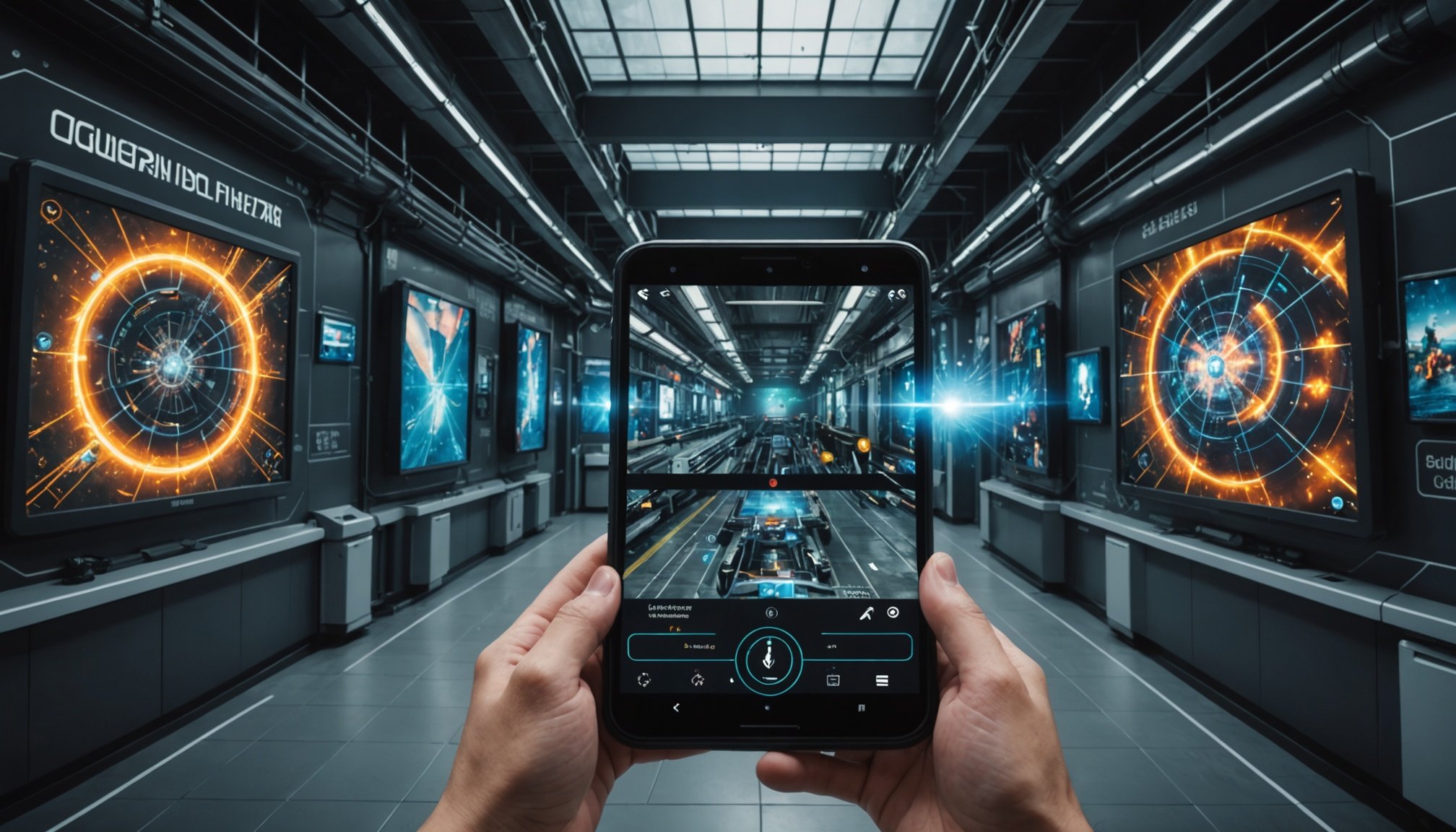Understanding Neural Networks in Object Recognition
Neural networks are a cornerstone of object recognition, leveraging complex architectures and functionalities to mimic human perception. At their core, these networks, inspired by the human brain, consist of layers of interconnected nodes. Each layer processes data incrementally, from simple features in early layers to complex representations in later ones. This structured processing capability allows neural networks to excel in identifying and classifying objects in diverse environments.
Deep learning, a subset of machine learning, plays a crucial role in advancing these capabilities. By utilising multiple layers of networks (known as deep neural networks), deep learning enhances the precision and accuracy of object recognition, making it more reliable across various applications. This progress is pivotal as it enables machines to discern objects with higher fidelity and adaptability.
Also read : Mastering Intuitive Gesture Controls: Essential Strategies for Engaging Augmented Reality Game Design
Key advancements in neural network algorithms have boosted object recognition’s relevance to new-age technologies like augmented reality. These algorithms facilitate enhanced object recognition, amplifying the seamless integration of digital and physical worlds in augmented reality experiences. This innovation not only improves the user experience but also opens avenues for robust applications in fields such as gaming, healthcare, and retail, demonstrating the transformative potential of neural networks.
Applications of Neural Networks in Augmented Reality Gaming
In the realm of augmented reality gaming, neural networks have revolutionised the landscape by enabling real-time processing. One notable case study involves the integration of neural networks in AR applications, resulting in a seamless user experience. Real-time processing allows for instantaneous object recognition, enhancing the interactivity and immersion of AR games.
In parallel : Transforming Platformer Gaming: Leveraging Neural Networks to Create Smart Enemy AI
Developers have harnessed neural networks to create dynamic environments where users can engage with digital elements as though they were tangible. The instantaneous feedback provided by real-time processing notably boosts user satisfaction, creating a more engaging experience. Feedback from users shows a considerable preference for games that adopt these cutting-edge technologies, citing improved interaction and realism.
A key advantage of neural networks in AR gaming is their ability to facilitate real-time processing of vast amounts of data. This capability is crucial for games requiring quick adaptations to changing environments. As the virtual and real worlds continue to merge, the relevance of neural networks in refining user engagement and interaction grows. The use of neural networks not only enhances gameplay mechanics but also ensures the potential for future innovations in gaming technology, promising long-term benefits for both developers and players.
Comparing Neural Networks with Traditional Object Recognition Methods
When examining traditional object recognition techniques, it’s essential to note their limitations in comparison to neural networks. Traditional methods, often reliant on statistical analysis or manually defined features, struggle with adaptability and accuracy when faced with complex data environments.
Neural networks, by contrast, excel in such scenarios due to their ability to learn and evolve from large datasets. They utilize deep learning, enhancing their capacity to recognize patterns and nuances, markedly boosting performance comparison metrics. Speed is another significant factor; traditional methods can lag in real-time processing, whereas neural networks process information swiftly due to their parallel computing capabilities.
However, traditional techniques can still hold advantages in certain situations. They demand less computational power and are easier to implement where simplicity is prioritised over adaptability. Their fixed nature can be beneficial in environments with stable data patterns where complexity isn’t a significant factor.
In scenarios requiring object detection with high precision and adaptability, neural networks clearly outpace their traditional counterparts. As technology advances, the trend leans heavily towards the adoption of neural networks, yet traditional methods might still have niche applications due to their straightforward implementation.
Benefits of Neural Networks in Augmented Reality Experiences
Neural networks bring myriad benefits to augmented reality (AR) experiences, enhancing user interaction and engagement significantly. The improved object recognition capabilities of neural networks foster heightened gameplay immersion. Players can expect smoother transitions between digital and physical realms, making the AR experience more authentic and satisfying.
The enhanced interaction facilitated by these networks is transformative. Unlike static systems, neural networks adapt and respond to complex user commands, enabling more dynamic AR environments. This adaptability enriches user experience by providing responsive elements that react to real-time actions, crucial for maintaining user interest and satisfaction.
For developers and players alike, the long-term advantages are promising. Developers benefit from neural networks’ ability to handle complex scenarios, enabling the design of intricate and engaging games. Players, on the other hand, enjoy more immersive experiences, motivated by the seamless interaction between the real and virtual worlds.
Additionally, neural networks’ continuous learning ability means that AR applications can improve over time, reacting smarter to user behaviour patterns. This quality ensures sustained user engagement, driving the future of AR gaming forward. As these benefits become more apparent, their integration into AR ecosystems promises ongoing innovation and enjoyment for all stakeholders.
Challenges and Barriers in Implementing Neural Networks
Implementing neural networks in augmented reality (AR) comes with several challenges and technical barriers. One common obstacle is the computational resources required for developing and maintaining these networks, given their high demand for memory and processing power. This is particularly relevant when integrating these technologies into AR systems, which necessitate efficient and quick computations to support real-time processing.
Another significant barrier is the quality and quantity of data needed for training neural networks effectively. High-quality datasets are crucial for accurate object recognition, yet they can be difficult to source. Poor-quality data can result in ineffective models that struggle with adaptability and precision.
Additionally, the specialist skills required for designing and implementing neural networks present adoption challenges. Not all organisations have access to skilled personnel or the capacity to invest in training, making it difficult to adopt these technologies at scale.
Despite these hurdles, advancements in computational capability and data collection techniques continue to pave the way for broader implementation. Overcoming these barriers can be strategically approached by investing in better hardware solutions, refining data collection processes, and fostering collaborations to share knowledge and resources—a promising outlook for neural network integration.
Future Trends in Neural Networks and Augmented Reality
As technology evolves, neural networks and augmented reality (AR) are experiencing exciting advancements. Emerging technologies within these frameworks are set to revolutionise various industries, promising significant innovations. One noteworthy trend is the integration of advanced deep learning models, which enhance the precision and versatility of object recognition in AR environments. These models support real-time adaptations, crucial for immersive and interactive experiences in gaming and beyond.
AI-powered AR gaming is predicted to reach new heights, leveraging machine learning to create more intelligent and responsive systems. These systems can learn from user interactions, providing personalised experiences and improving engagement. The next generation of AR technology promises smarter game dynamics and tailored content, adapting to individual preferences.
Cross-industry collaborations are expected to drive innovations further. By combining expertise from diverse fields, novel applications of neural networks in AR can be explored, from immersive retail experiences to advanced healthcare diagnostics. As these collaborations grow, technology forecast indicates a wave of fresh opportunities, possibly expanding the reach and effectiveness of AR solutions.
These developments highlight a future rich with potential for AR and neural networks, setting the stage for transformative changes in both technology and user experience.











